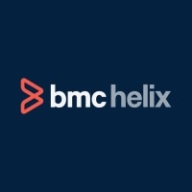

BMC Helix Continuous Optimization and Azure Cost Management compete in IT cost management and optimization. While both have unique strengths, Azure Cost Management has an edge due to its comprehensive features and integration within the Azure ecosystem.
Features: BMC Helix Continuous Optimization offers predictive analytics, resource optimization across multi-cloud environments, and in-depth reporting for IT operational efficiency. Azure Cost Management provides real-time cost analysis, budget management, and seamless cloud-native management features, enhancing integration within Azure services.
Ease of Deployment and Customer Service: Azure Cost Management offers seamless deployment and extensive support for Azure customers through Azure's network. BMC Helix Continuous Optimization provides a robust deployment model and comprehensive user support, suited for complex multi-cloud environments. Azure's integration gives it an advantage for Azure-centric businesses.
Pricing and ROI: BMC Helix Continuous Optimization aligns its flexible pricing with enterprise needs for short-term cost efficiency. Azure Cost Management might have higher setup costs but offers strong value with long-term cost management efficiencies and Microsoft suite integration. Azure's ecosystem advantage supports its pricing model for businesses embedded in Azure services.
| Product | Market Share (%) |
|---|---|
| Azure Cost Management | 6.0% |
| BMC Helix Continuous Optimization | 0.6% |
| Other | 93.4% |

| Company Size | Count |
|---|---|
| Small Business | 11 |
| Midsize Enterprise | 6 |
| Large Enterprise | 32 |
Azure Cost Management provides actionable insights for IT professionals to optimize cloud expenses and align budgets with strategic goals. It features real-time visibility and analytics for efficient resource management.
Azure Cost Management offers a comprehensive suite of tools for cost analysis and control, including budgeting alerts and integration capabilities to optimize resource spending. Its intuitive interface simplifies navigation while providing trend analysis, forecasting, and cost-saving recommendations. By delivering detailed insights into resource usage, Azure helps organizations manage expenses effectively, enabling strategic financial planning through clear visualizations and reports.
What are the key features of Azure Cost Management?Azure Cost Management is widely implemented in industries seeking to monitor and control budgets, optimize costs, and track resource spending. Companies utilize it to gain billing insights, understand usage patterns, and minimize cloud expenses. It is instrumental in managing infrastructure costs and supporting cost management strategies across different deployments, making it valuable for projecting profitability and setting cost alerts.
BMC Helix Continuous Optimization is a comprehensive performance and capacity management solution designed to help enterprises optimize IT resources, enhancing operational efficiency while managing costs effectively.
It provides predictive analytics and modeling capabilities, allowing businesses to meet evolving demands seamlessly. By proactively identifying resource constraints and predicting future trends, BMC Helix Continuous Optimization assists organizations in aligning IT resources with business objectives. This strategic approach ensures optimized performance, resource allocation, and cost management with enhanced insights.
What are the key features of BMC Helix Continuous Optimization?
What benefits can be expected from BMC Helix Continuous Optimization?
BMC Helix Continuous Optimization is leveraged by industries like financial services, healthcare, and telecommunications to ensure resource efficiency. These sectors benefit from predictive modeling and capacity planning capabilities, enabling them to adapt to fast-changing conditions while maintaining optimal performance.
We monitor all Cloud Cost Management reviews to prevent fraudulent reviews and keep review quality high. We do not post reviews by company employees or direct competitors. We validate each review for authenticity via cross-reference with LinkedIn, and personal follow-up with the reviewer when necessary.